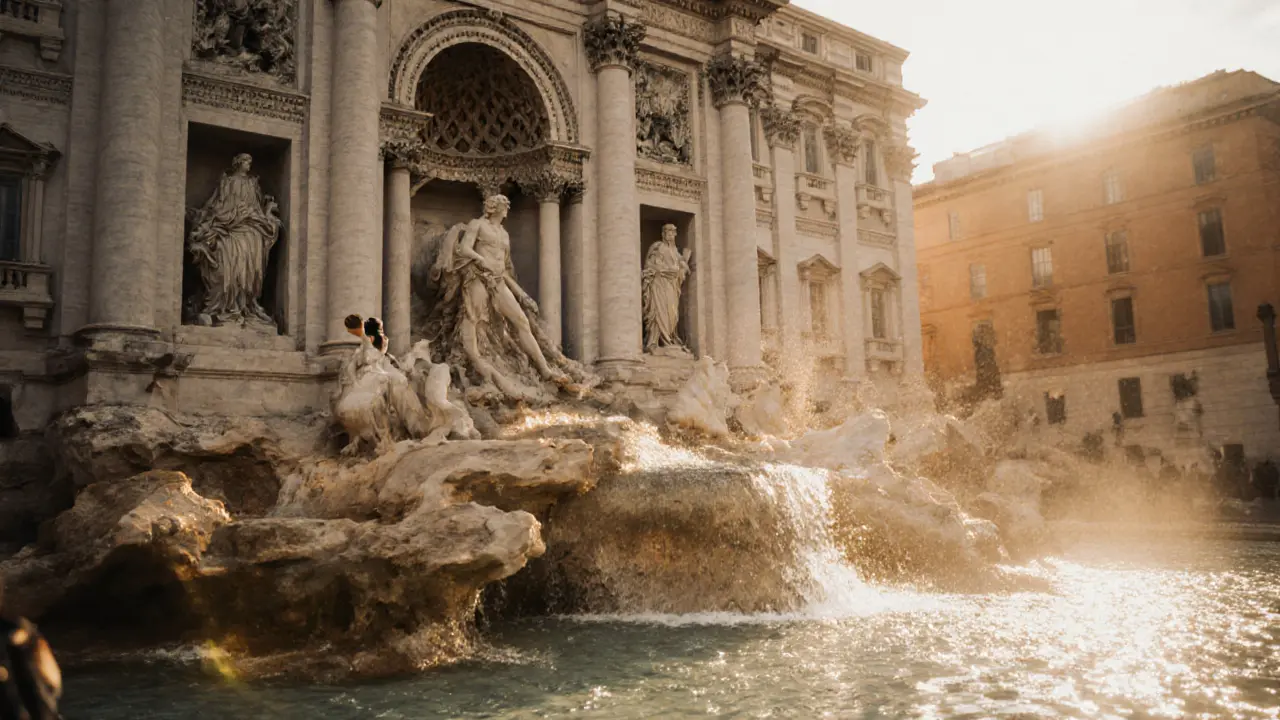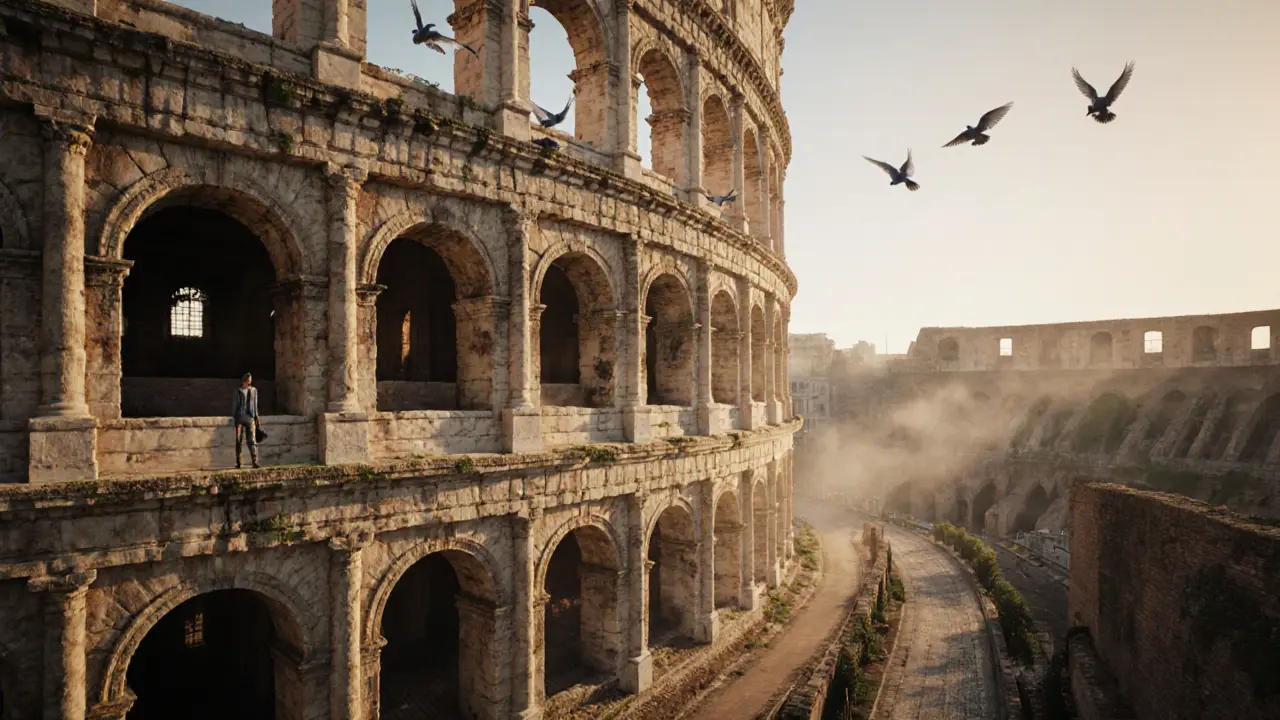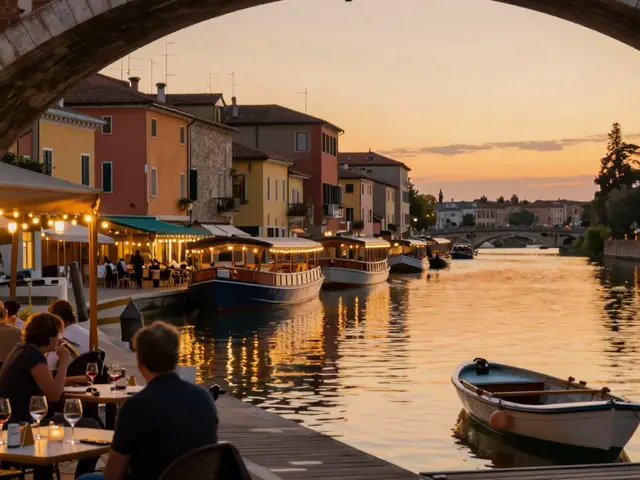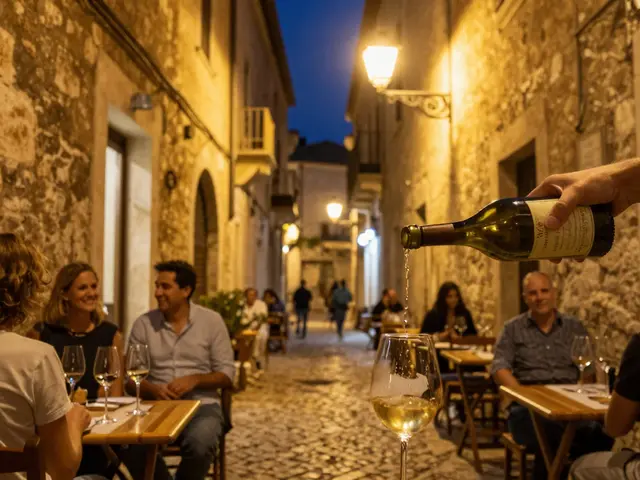If you’ve ever dreamed of walking where emperors once strolled, standing under the same sky as Michelangelo’s frescoes, or sipping espresso while the sun sets behind the Colosseum-Rome delivers. This isn’t just a city. It’s a living museum, a bustling marketplace, a kitchen that feeds the soul. And you don’t need weeks to feel it. One perfect day is all it takes to fall in love.
Start Early at the Colosseum
Arrive by 8:00 a.m. The Colosseum opens at 8:30, but the line starts forming before dawn. Get there early, skip the ticket booth, and book online ahead of time. The Colosseum isn’t just ancient-it’s alive. Walk through the underground tunnels where gladiators waited, stand where the emperor once watched bloodshed, and look up at the arches that have survived earthquakes, fires, and centuries of stone thieves. The audio guide is worth it. It tells you how the arena floor once hid a network of lifts and traps, how lions were hoisted up from below, how the crowd roared for a kill. You’ll hear the echo of history, not just see it.Don’t rush. Sit on a bench near the third tier. Let the silence settle. No one’s shouting. No tour buses. Just the wind, the pigeons, and the weight of 2,000 years.
Walk to the Roman Forum and Palatine Hill
The Colosseum connects directly to the Roman Forum, and a single ticket covers both. This was the heart of ancient Rome-the political center, the marketplace, the stage for speeches and scandals. Walk along the Via Sacra, past the Temple of Saturn, the Arch of Titus, and the ruins of the Senate House. Look for the Vestal Virgins’ house-tiny, simple, but sacred. These women kept the eternal flame alive. If it went out, they were buried alive. That’s how seriously they took it.Then climb up to Palatine Hill. This is where emperors built their palaces. Augustus lived here. So did Tiberius. From the top, you get the best view of the Forum below and the Circus Maximus in the distance. You can see how the city sprawled, how power was positioned on high ground. Sit on the grass. Eat the panino you bought from the bakery near the entrance. No one will bother you.
Grab a Real Roman Lunch
Head to Trastevere. Not the touristy side. The real one. Find a small trattoria with checkered tablecloths and no English menu. Look for the sign that says “Cucina Romana”. Order carbonara-not the creamy, egg-heavy version you get abroad. Real Roman carbonara has only eggs, Pecorino Romano, guanciale, and black pepper. No cream. No garlic. No onions. Just pure, salty, fatty perfection.Pair it with a glass of Cesanese del Piglio, a local red that’s light but full of cherry and earth. Drink it slowly. Watch the locals. Notice how they don’t rush. Lunch here lasts two hours. That’s not a habit. It’s a ritual.

Visit the Pantheon and Piazza Navona
The Pantheon is the most intact building from ancient Rome. It’s 2,000 years old. And it still has its original concrete dome-the largest unreinforced concrete dome in the world. Walk inside. Look up. That hole in the ceiling? It’s called the oculus. It lets in rain, sunlight, and divine light. On sunny days, a beam of light sweeps across the floor like a clock. Go at noon. Stand under it. Feel the cool air. The marble floor is worn smooth by millions of footsteps. You’re standing where Romans stood. And they didn’t have air conditioning.Walk 10 minutes to Piazza Navona. It’s built on the site of a Roman stadium. The three fountains-Bernini’s Fontana dei Quattro Fiumi in the center-is a masterpiece. Watch the street artists sketch tourists. Listen to the buskers play accordion. Buy a gelato from Giolitti. Try the ricotta and fig flavor. It’s not on every menu. Ask for it. They’ll make it for you.
See the Trevi Fountain at Sunset
The Trevi Fountain is crowded. Always. But sunset? That’s magic. The golden light hits the white marble, turns the water into liquid gold. The statues of Neptune, Oceanus, and Abundance glow like they’re alive. Toss your coin. Right hand over left shoulder. Don’t look back. The tradition says it guarantees a return to Rome. It’s not superstition. It’s a promise.Don’t take a photo with your phone. Look at it. Really look. The water isn’t just falling-it’s dancing. The sculpted waves look like they’re still moving. That’s the genius of Nicola Salvi. He didn’t just build a fountain. He built motion.

End the Day at the Spanish Steps
Climb the Spanish Steps at dusk. Sit halfway up. Look down at the Piazza di Spagna. Watch the streetlights flicker on. Watch the last of the day’s tourists wander past the luxury shops. You’ll see couples holding hands, old men reading newspapers, a woman feeding pigeons. This isn’t a tourist spot. It’s a stage for daily life.Order a cappuccino from the café at the top. No one drinks cappuccino after 11 a.m. in Rome. But you’re not in Rome to follow rules. You’re here to feel them.
Why This Day Works
You didn’t see every museum. You didn’t climb every hill. You didn’t try every pasta. And that’s the point. Rome doesn’t reward the checklist. It rewards presence. You saw the bones of empire, tasted its food, felt its rhythm. You didn’t just visit. You remembered.This is the secret: Rome doesn’t need to be seen. It needs to be lived. One day isn’t enough to know it. But it’s enough to fall for it.
Can I see the Vatican in one day?
Yes, but it will eat up your whole afternoon. The Vatican Museums, Sistine Chapel, and St. Peter’s Basilica take at least four hours-even if you skip the lines. If you want to do the Vatican, skip the Pantheon or Piazza Navona. Prioritize based on what moves you. Art lovers? Go Vatican. History lovers? Stick with the Colosseum and Forum.
Is it safe to walk around Rome alone?
Yes, Rome is generally safe for solo travelers, especially during daylight hours. Pickpockets are the biggest risk in crowded spots like the metro, Trevi Fountain, and tourist buses. Keep your bag in front of you. Don’t carry your wallet in your back pocket. Avoid poorly lit alleys after dark, especially near Termini Station. But walking from the Colosseum to the Pantheon at sunset? Perfectly safe-and one of the best parts of the day.
What’s the best way to get around Rome?
Walk. Seriously. Most major sights are within a 30-minute walk of each other. If you’re tired, use the metro (Line A for Vatican/Colosseum, Line B for Termini). Buses are confusing for tourists. Taxis are expensive and often stuck in traffic. A single metro ticket costs €1.50 and works for 100 minutes on buses and metro. Buy it at any tabacchi shop or metro station. Don’t buy a multi-day pass unless you’re staying more than three days.
Do I need to book tickets in advance?
Yes, for the Colosseum, Vatican Museums, and Borghese Gallery. For the Colosseum, book at coopculture.it. For the Vatican, use officinavaticane.va. For the Borghese, book at borghese.it-slots sell out weeks ahead. For everything else-the Pantheon, Trevi Fountain, Spanish Steps-you can just show up. No tickets needed.
What should I wear in Rome?
Dress like a local. Romans dress well, even casually. No shorts in churches-cover your knees and shoulders. Comfortable shoes are non-negotiable. You’ll walk 10,000 steps a day on cobblestones. A light jacket works for evenings. Avoid flip-flops unless you’re at the beach. And don’t wear baseball caps in churches. It’s not a rule, but people notice.






Bro, the Colosseum at dawn? Absolute game-changer. I did this last year and the audio guide literally rewired my brain-those underground lifts? Pure Roman engineering sorcery. You feel the adrenaline of the crowd even in silence. And the panino near Palatine? Best $3 I ever spent. No cap.
Pro tip: Skip the Vatican if you’re short on time. The Forum’s got more soul than 10 Sistine Chapels combined. Rome’s not about ticking boxes-it’s about feeling the weight of time in your bones.
As someone from Delhi where chaos is the norm, I was stunned by how Rome balances history with everyday life. The way locals just sit at Trastevere for two hours over carbonara? That’s not tourism-that’s philosophy. No rush, no noise, just presence.
And the oculus in the Pantheon? I stood there for 10 minutes just watching the light move. Felt like I was part of a 2000-year-old prayer. Beautiful.
just got back from rome last week and this is 100% accurate. carbonara without cream? yes. the pantheon at noon? yes. the Trevi coin toss? yes. i didn’t even know i needed this until i did it.
also-no one talks about how the spanish steps at dusk feel like the whole city is exhaling. magic.
Ugh, this is such a cliché list. Everyone says ‘skip the Vatican’ like it’s some sacred rule. Have you even been to the Borghese? The Bernini sculptures there are more alive than half the ruins you listed. And ‘no cream in carbonara’? That’s not tradition-that’s food purist nonsense. My nonna used cream. And she was Roman.
Also, the Trevi Fountain? Overrated. The real gem is the lesser-known Fontana dell’Acqua Paola on Janiculum Hill. No crowds. Just sunset, wine, and silence. But no one ever mentions that because it doesn’t fit the Instagram narrative.
While I appreciate the sentiment, I must note several inaccuracies. First, the Colosseum does not open at 8:30 a.m. during peak season-it opens at 8:00 a.m. Second, the term ‘Cucina Romana’ is not a sign you’ll find on every trattoria-it’s a genre, not a brand. Third, Cesanese del Piglio is not typically paired with carbonara; it’s a lighter wine meant for summer dishes, not fatty guanciale.
And while I admire the poetic tone, this reads more like a travel brochure than a practical guide. Precision matters, especially when giving advice to travelers.
i just wanted to say thank you for writing this. i was so stressed before my trip and i read this the night before i left and i actually cried a little. it made me feel like i didn’t have to see everything to get it.
also i totally forgot to ask for the ricotta and fig gelato and now i’m heartbroken. next time.
OMG YES!!! 🙌 I did this exact route last month and the Pantheon at noon? 🤯 The light hit the floor like a spotlight from heaven. And the guy at Giolitti? He made me the ricotta-fig gelato without even asking-just smiled and said, ‘You have good taste, my friend.’ 😭
Pro tip: Wear socks with your shoes. Cobblestones are brutal. I learned the hard way.
There’s something profoundly quiet about Rome, isn’t there? Not the absence of sound-but the presence of time. The Colosseum doesn’t shout; it breathes. The Pantheon doesn’t impress; it holds you. And the carbonara? It doesn’t feed you-it remembers you.
I think the real miracle isn’t that these buildings survived two millennia-it’s that the rhythm of life still moves through them, unchanged. We come to see ruins. But Rome gives us echoes. And sometimes, echoes are the only things that truly last.
Thank you for writing this. It felt like a letter from a friend who’d been there-and who knew, somehow, that I needed to hear it.